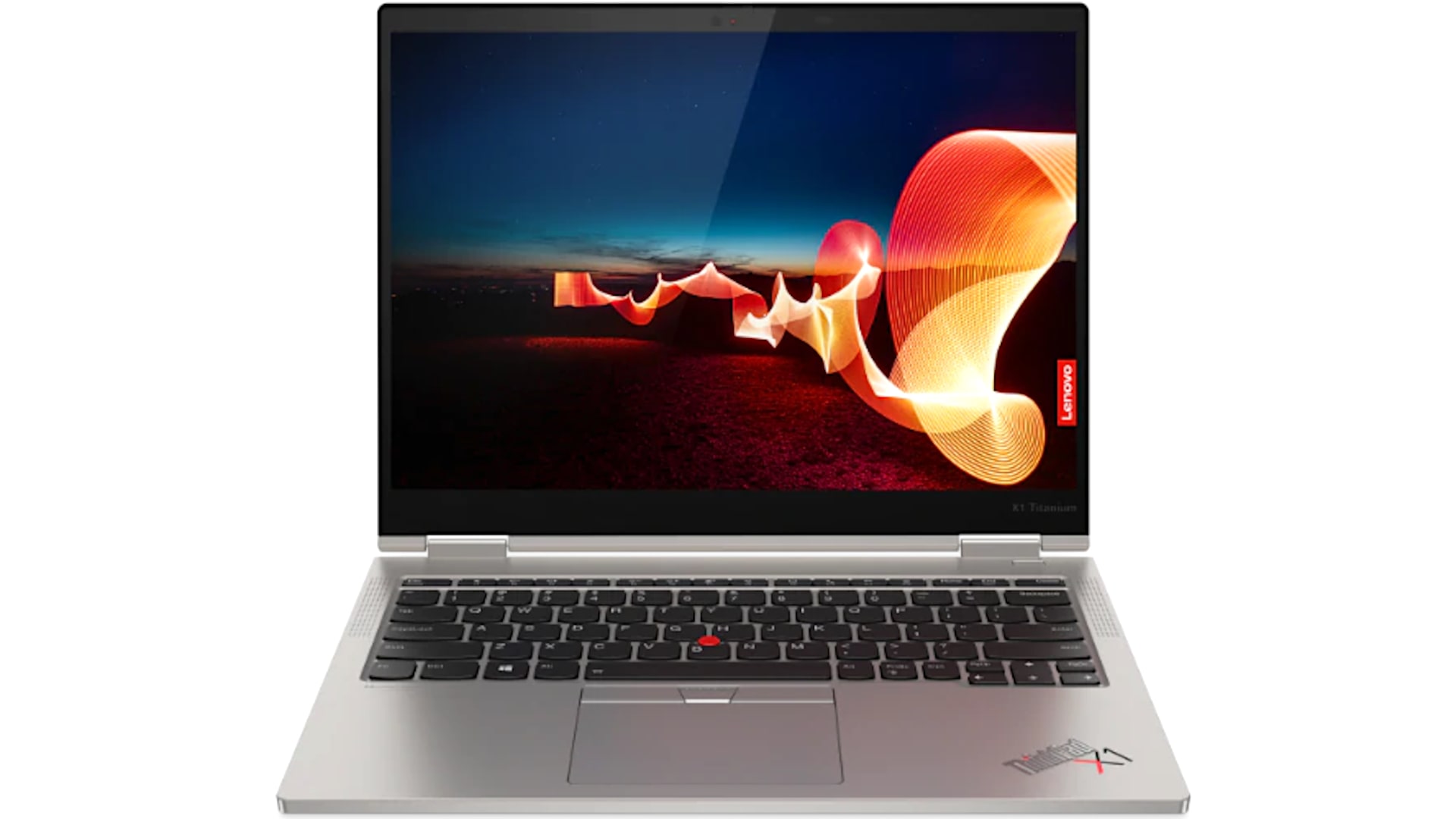In this article, I give you my Lenovo ThinkPad X1 Titanium Yoga review with specs included. This is not just the regular Yoga but the Titanium one. Thanks to the titanium of it, it gets to be even lighter.
Now that the X1 Yoga was what you would call a heavy, this is about half a pound lighter. It also has a different aspect ratio display, a three-by-two aspect ratio, like Microsoft Surface products, which is pretty popular.
Because this is a Yoga it has a touch screen and a magnetically attachable pen, which may be included in the box with some configurations or otherwise sold separately.
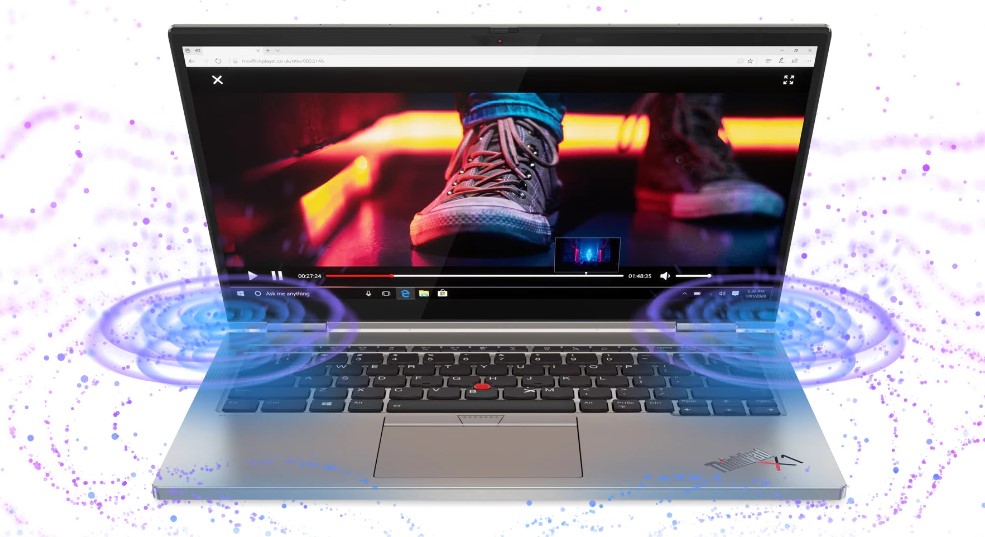
Inside the case, we have intel 11th generation Ice Lake lower power CPUs versus the usual ultrabook CPU, something we’ve seen with the ThinkPad X1 Nano for example, and the X12 tablet.
This isn’t the first time we’ve seen titanium in a laptop. If you remember years ago, there was the Macbook Pro with titanium it was called the “TiBook” (PowerBook G4) back in the day. On this one, the lid is a mix of titanium and carbon fiber and the bottom is aluminum and magnesium so the entire thing is not titanium.
Lenovo ThinkPad X1 Titanium Yoga has a kind of character that we think of is kind of a titanium color. It’s a warm, silvery color with a little bit of a hint of yellow on it and it’s quite a textured finish.
The 3×2 aspect ratio makes it a little bit deeper than the average laptop and a little bit deeper than the 16×10 aspect ratio regular X1 Yoga from Lenovo.
Obviously, it’s a Thinkpad, so it’s primarily a business laptop. This is for people who want to have an even thinner and lighter Yoga because it’s trendy, it’s chic, it’s incredibly skinny, it’s 11.5 millimeters, which is as thick as today’s slim smartphones.
And, also, because it’s actually functioning a little bit easier to use in tablet mode, not just because it weighs half a pound less but also because the three-by-two aspect ratio is better suited to note-taking and drawing.
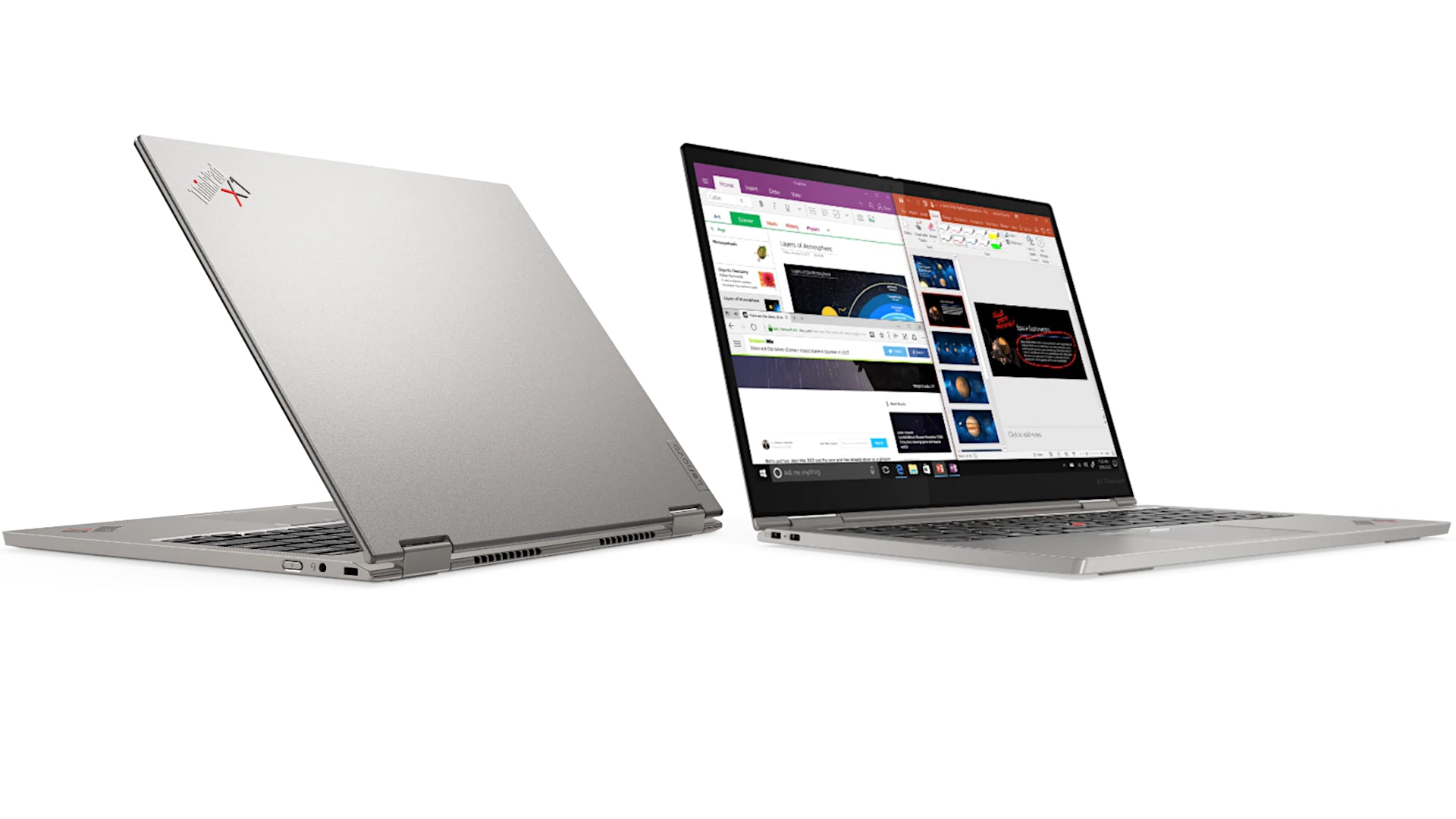
Some more about the physical aspects of the laptop. Lenovo ThinkPad X1 Titanium Yoga is fairly rigid. One thing you will have here is a dongle life. You lose the USB-A ports that the regular X1 Yoga has. We have two Thunderbolt 4 with USB-C style connectors onboard and the headphone jack and that is it.
This laptop has some of the usual features that we’ve seen lately in the higher-end Thinkpads. By the way, this one’s (usually) about a hundred dollars more than the regular X1 Yoga.
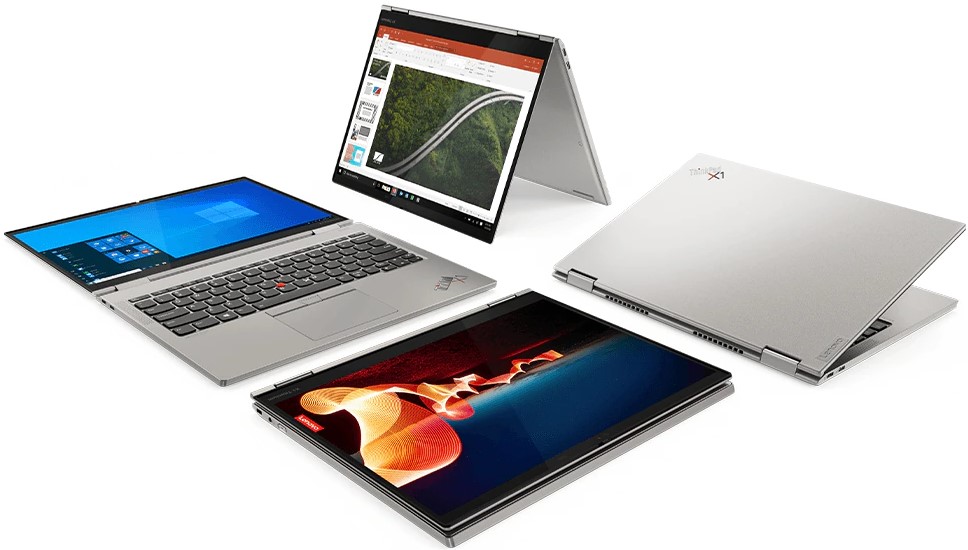
There is the human presence detection option, which drives us benchmarkers crazy because it detects the presence of humans in front of the screen keeps the screen on, and keeps it unlocked. Because, let’s say, your cat actually starts playing with your keyboard.
You can disable this if you want to or you can leave it on. It also knows when you walk up to and it can use the facial recognition Windows Hello IR camera to unlock it automatically. And that part actually is pretty cool.
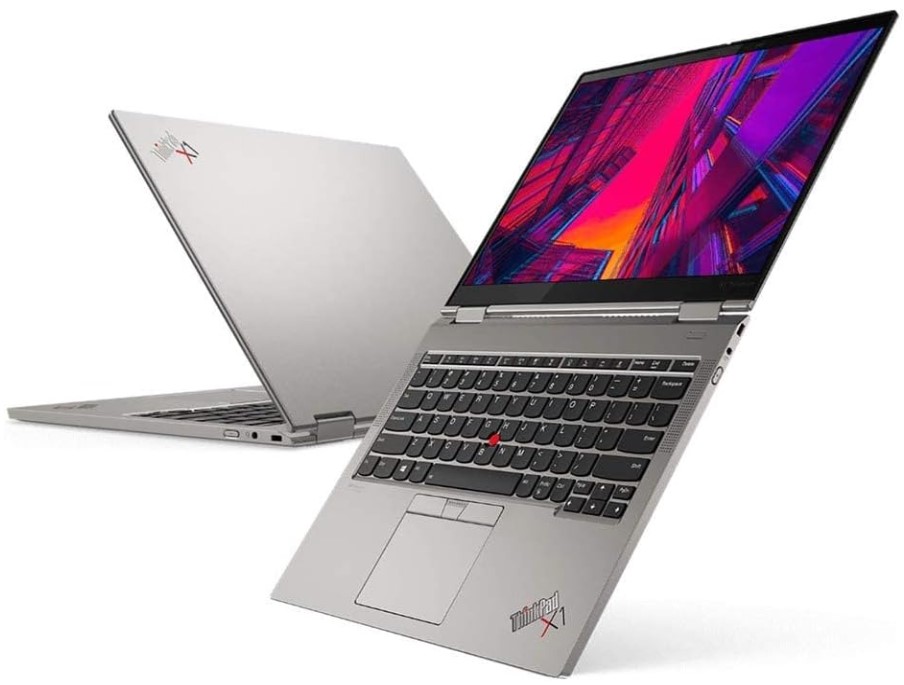
There is a physical shutter lens cover on the camera for privacy. So, if you don’t want the webcam available it’s physically blocked by the think shutter.
There’s also a fingerprint scanner on board. It’s located on the right side above the keyboard and just next to the right hinge.
In terms of the thinness and what that takes away from the laptop. The first thing is, it has a haptic trackpad which is kind of weird. Sure, Apple has done this sort of thing with some of their trackpads but I can’t say that I really like it.
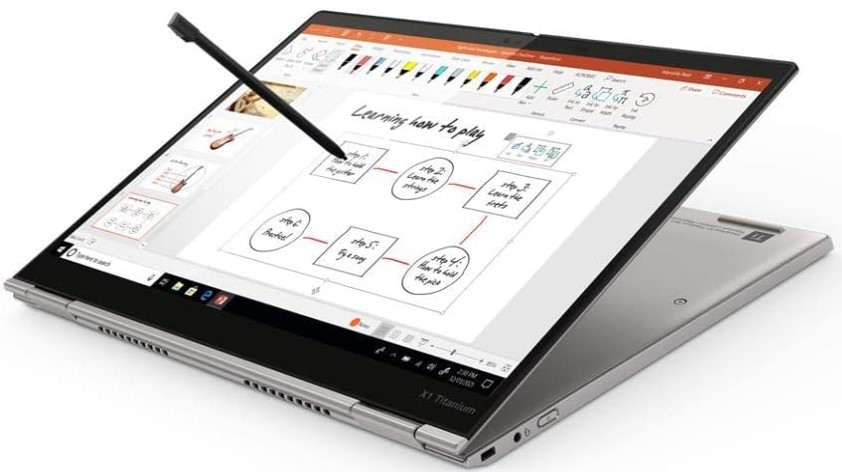
Mostly because if you’re doing things like click-dragging, where you’re keeping your thumb down, and where the mouse button area is at the lower track bit, it often doesn’t want to move and it catches on too late. But, it’ll catch on in the middle of the trackpad where you don’t do a click-drag from. It’s a little disappointing to me.
The keyboard also takes a bit of a hit. 1.35 millimeters of key travel is too low. And, while the keys do feel crisp and positive when you’re typing on it, it’s a little bit like a Macbook Pro keyboard kind of feel instead of the usual nice deep cushy Thinkpad experience.
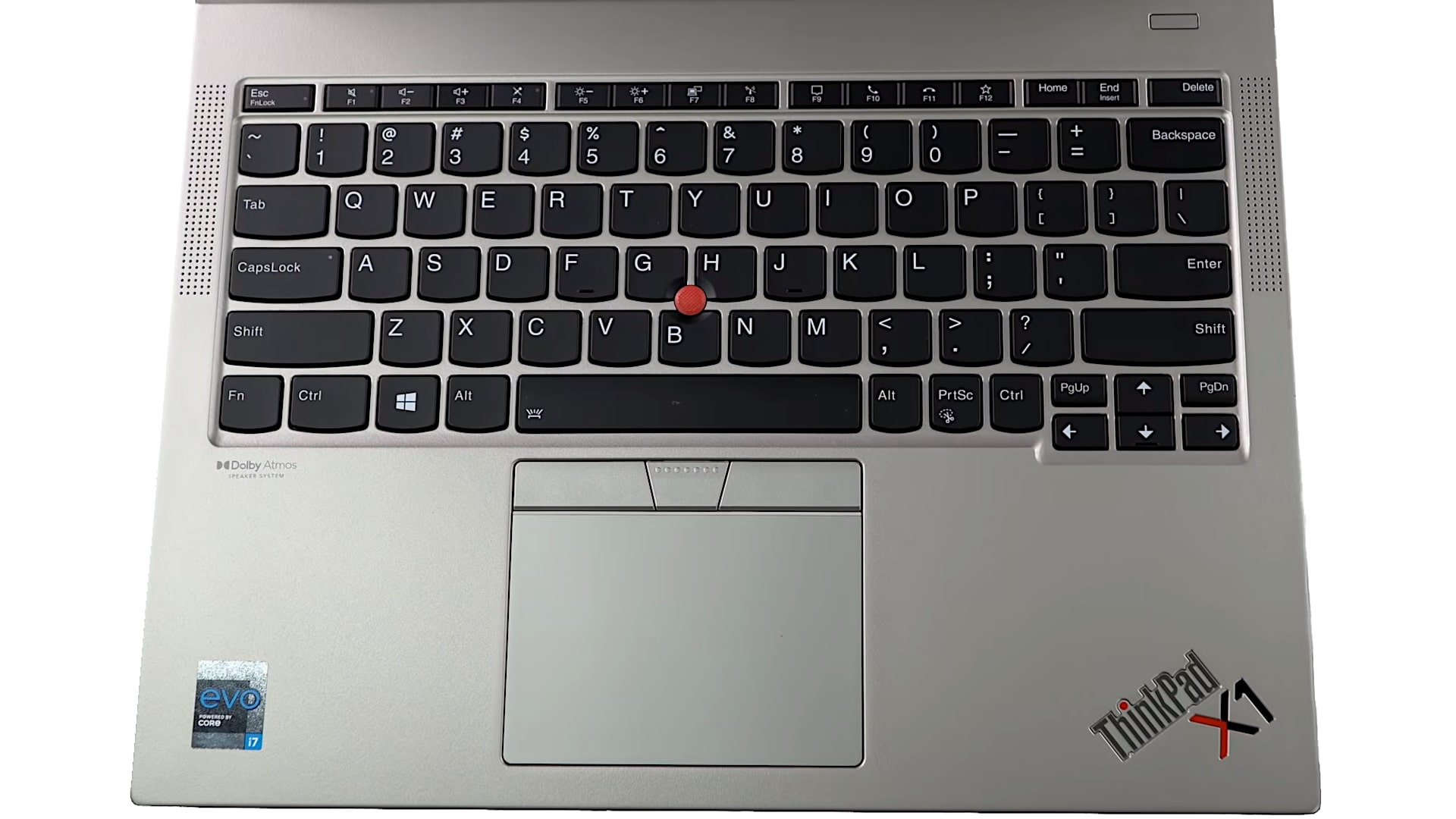
For those who want a traditional Thinkpad kind of keyboard, this one’s shorter travel, a little bit more abrupt but not as jarring as XPS 13 where you really feel like your finger joints might get sore because you’re really bottoming out on the keys.
| Name | Lenovo ThinkPad X1 Titanium Yoga |
| Display | 13.5″ QHD, 2256 x 1504 IPS, 3:2 aspect ratio, Lenovo Precision Pen supported (Wacom AES) 483 Nits, 100% sRGB, 77% Adobe RGB, 80% DCI-P3, 6500K, 0.30 Black level, 1620:1 Contrast, Len4171 Panel |
| Processor | Intel Core i5-1130G7, i5-1140G7 vPro, i7-1160G7, i7-1180G7 vPro |
| Graphics | Intel Iris Xe |
| Storage/Memory | 8/16GB LPDDR4x 4266MHz RAM, soldered |
| Extra storage | M.2 SSD up to 2 TB |
| Extra features | Fingerprint scanner, Windows Hello IR camera with ThinkShutter |
| Connectivity | Intel Wi-Fi 6 AX201, Bluetooth 5.1, optional 5G CAT20 |
| Audio | 2×2 watt stereo speakers, Dolby Atmos |
| Battery/Charger | 44.5 WHr battery, 65 watt USB-C charger |
The keyboard is backlit in white. As always, Fn + spacebar on Thinkpads is to activate your backlighting.
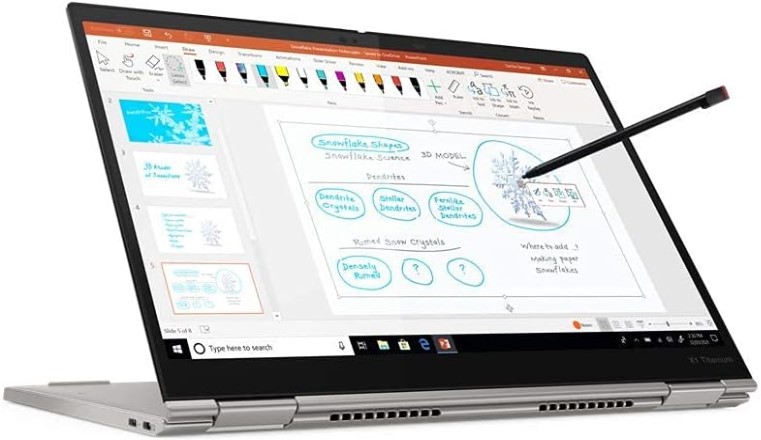
In terms of network connectivity, we have Intel Wi-Fi 6 on board as the AX201 card. Plus, there is Bluetooth 5.1 and as well there’s an option for 5G, which has a fallback to LTE.
There are two 2-watt stereo speakers onboard and they’re okay. I mean, this is a very thin laptop, there’s not much room for big drivers. Much as Thinkpads sometimes impress us with their sound, this one is just okay.
Of course, this is a convertible so you can use this in tablet mode, in presentation mode, in…you name it. All the usual versatility of the Yoga 360-degree hinges is still here.
The hinges are reasonably stiff. There’s some bouncing if you shake the laptop and, say you were riding on a bus or something like that.
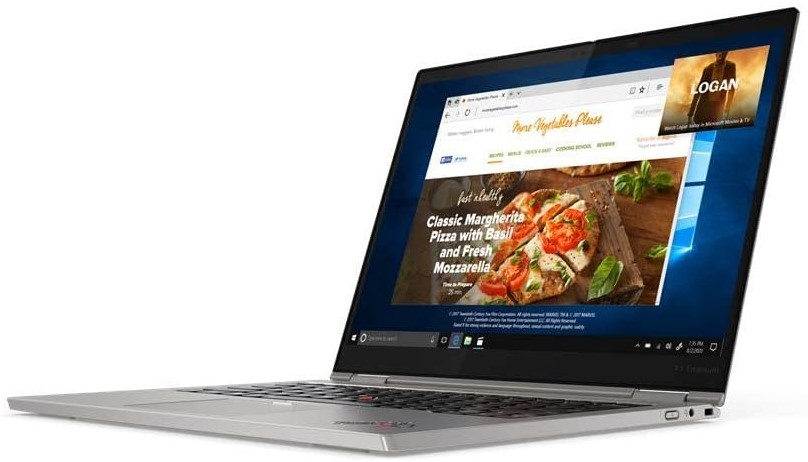
Pen experience is Wacom AES 2.0 with 4096 pressure levels on board and it’s a pretty decent solution. It’s what Lenovo has been using with think pads for years now. There is a little diagonal line jitter, for artists you would care about that maybe, but for hand-handwriting notes it’s lovely. Even for casual artwork, it does the job just fine.
This has a QHD resolution display, a three-by-two aspect ratio IPS. Lenovo claims it’s 450 nits of brightness but it actually measures even higher, which is always nice.
Experientially, you open it up, you boot it up, and you can see that that’s a nice-looking display. It has good contrast, good colors, and full sRGB, it’s not an ultra-wide gamut 100 P3 display but still, it looks good.
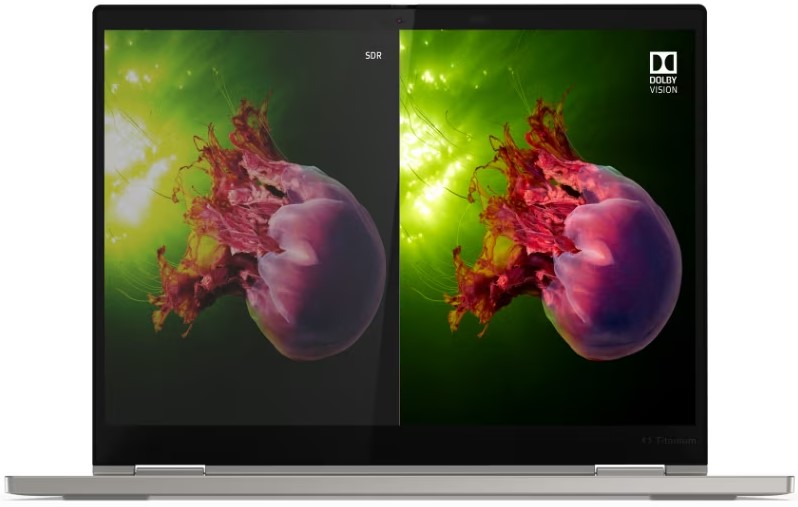
Since it’s a touch screen, it is a glossy display. As reflectivity goes versus HP and Dell, it’s actually not that bad though. I would just say, the display is one of the strong points of this laptop.
It’s nice having that bump up in resolution without going all the way to 4K, which is probably overkill for most people with a 13.5-inch display.
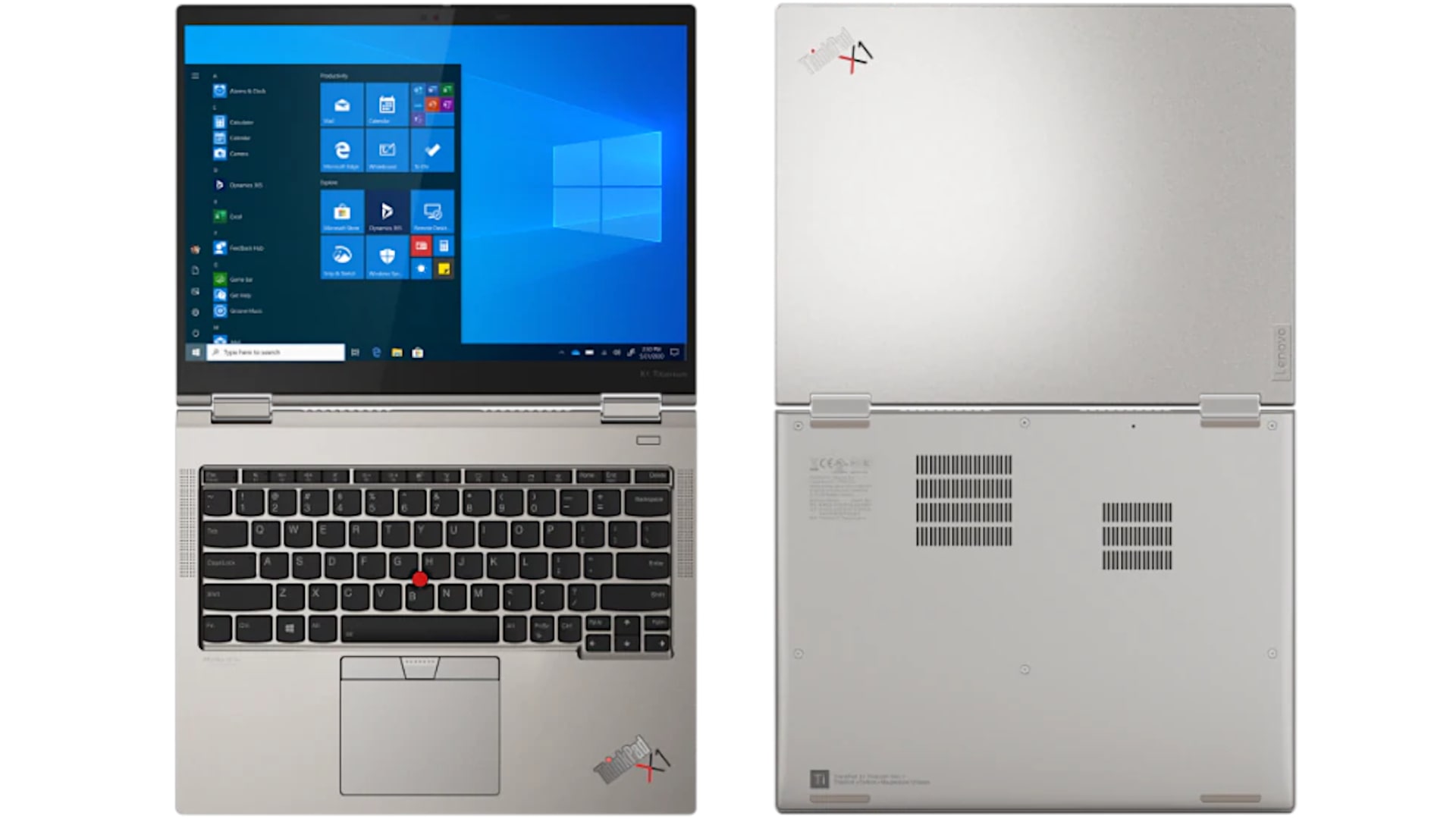
In terms of performance, we have the lower-power CPUs from Intel’s 11th generation line. The ones that can do 7 watts to 15 watts versus the 15 watts plus you see with your usual ultrabook CPUs.
Now, Lenovo did that with the Thinkpad X1 Nano and with the X12 tablet (that I recently reviewed) and performance was still pretty good on those, honestly. It’s not so different from your standard ultrabook because you can push that power to 15 watts.
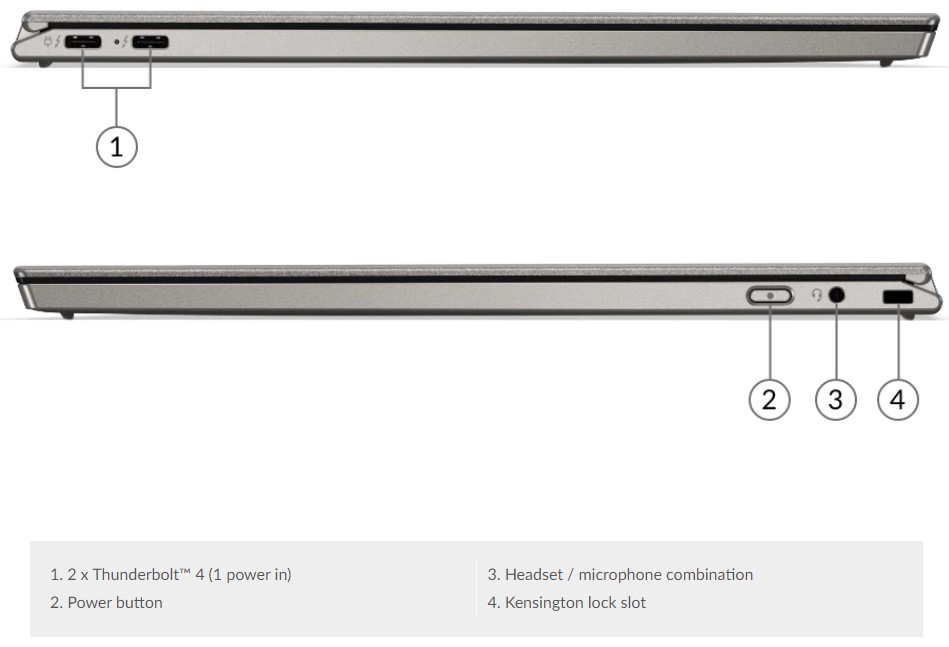
But, in this case, the cooling solution has a bit less room, it seems. While performance is not terrible on this, it’s not as strong as the X1 Nano, which is also a compelling ultraportable that Lenovo offers a pretty cool one.
You’ll notice that for longer-term tasks like if you’re encoding a video or doing anything CPU-intensive calculations, as they run past a five-minute mark, or something like that, you’ll see the clock speeds drop a bit on it. It doesn’t become a useless doorstop in terms of speed but it just doesn’t hold the clock speeds, as well as the X1 Nano, does.
RAM is soldered on the board, we’ll take a look at the internals and discuss all that stuff later.
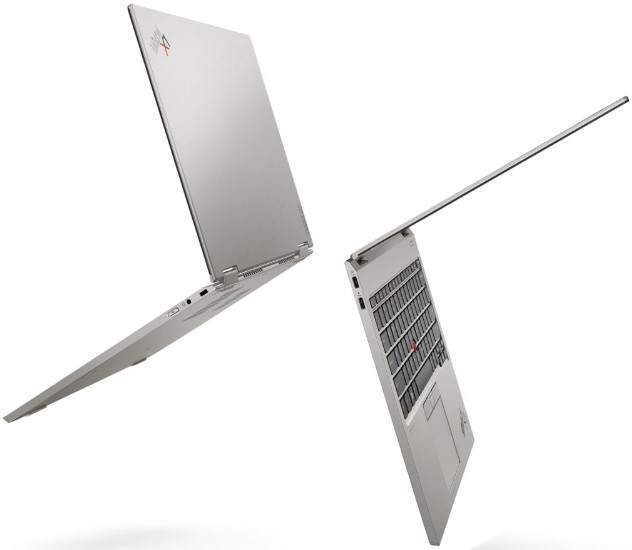
The battery life on this is pretty good. There is a 44.5-watt-hour battery, which is a reasonably good-sized battery for a very thin and light laptop. It comes with Lenovo 65-watt fast charger.
Given the fact that we have a lower power CPU here and Intel Xe integrated Iris graphics, it’s gonna depend on what you do, but for my usual use of lightweight productivity work, a little streaming video, editing two photos in Photoshop, with the brightness set to 200 nits, we can expect about eight to nine hours of battery life.
That’s not bad battery life. If you run into lower brightness or if you’re doing lower workloads on this thing, you could probably push it even further. So, it does well in the battery department.
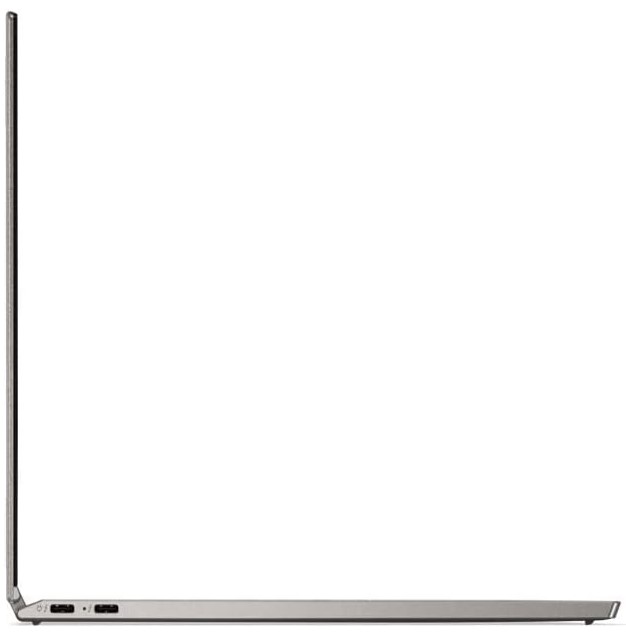
If you’re thinking about Lenovo ThinkPad X1 Titanium Yoga versus the regular X1 Yoga, I think the obvious thing is you’re going to get a little bit more horsepower and performance out of the standard X1 Yoga. It will be heavier by half a pound and a little bit thicker. I don’t think that that’s really what people care about that much between really skinny and super skinny.
Also, there’s the 16 by 10 aspect ratio, which is really popular right now in the regular Yoga, versus the 3 by 2 aspect ratio, which Microsoft Surface lovers tend to really enjoy. If you find that more useful if you’re not consuming a lot of video for example. Because with a 3 by 2 aspect ratio, you are going to see big black bars on top and bottom of a video.
The keyboard on the regular X1 Yoga is a bit more comfortable and it has normal trackpads. So those will be the selling points to save $100 and go with the not titanium version.
To take off the bottom cover, just unscrew Phillips head screws, six of them. Once you unscrew the captive screws, just pull up from the back a little bit and the cover comes off. There are no vicious plastic clips to fight with.
Here are the internals of the Lenovo ThinkPad X1 Titanium Yoga. With the interesting L-shaped battery here. The haptic trackpad right there, done to get the laptop as thin as they could, that’s why we have that haptic trackpad.
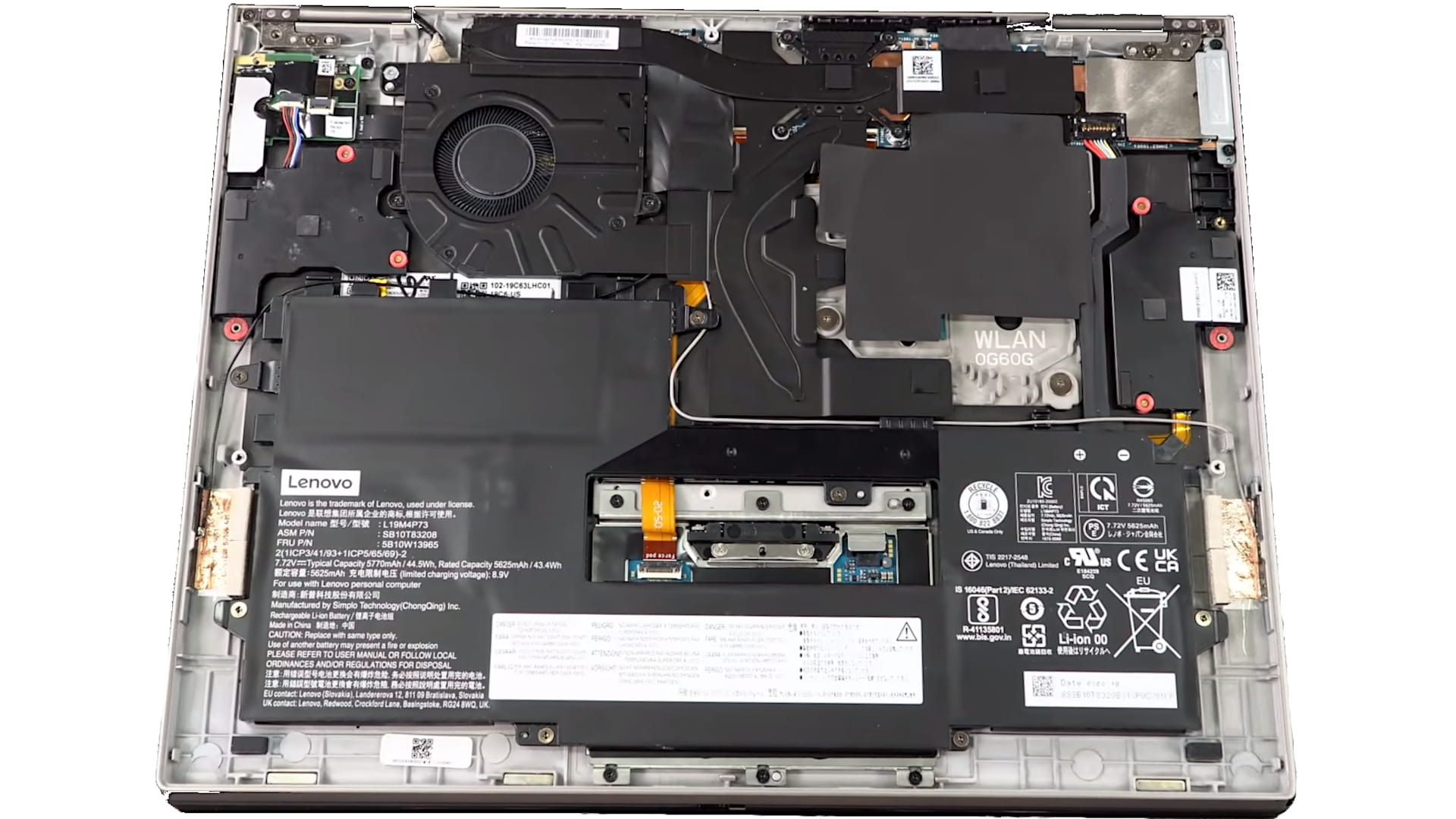
There’s your fan for cooling and not a lot else. RAM is soldered onboard and, if you’re wondering where the SSD is, it’s underneath that central cover. As you can see there’s only room for a shorty here not for the usual 2280 length SSD.
If you did go for that 5G/4G card, it would go next to the SSD slot. I don’t even have the connector soldered on for this model though.
Wi-Fi is also soldered on board here so typical of ultrabooks especially skinny ones, not a lot of upgradeable going on.
So, that’s the Lenovo ThinkPad X1 Titanium Yoga, the super crazy thin and light laptop. That is for Yoga lovers who want to see their yoga on a diet if there is a person out there who meets those criteria. It is such an easy carry and it has a big three-by-two aspect ratio display. Those are the selling points.
It has a little less horsepower compared to a standard X1 Yoga, even compared to the X1 Nano at times, and that weirdo trackpad and the less key travel would be what is against it.
Lenovo ThinkPad X1 Titanium Yoga
-
Performance - 95%95%
-
Price - 93%93%
-
Value - 94%94%

